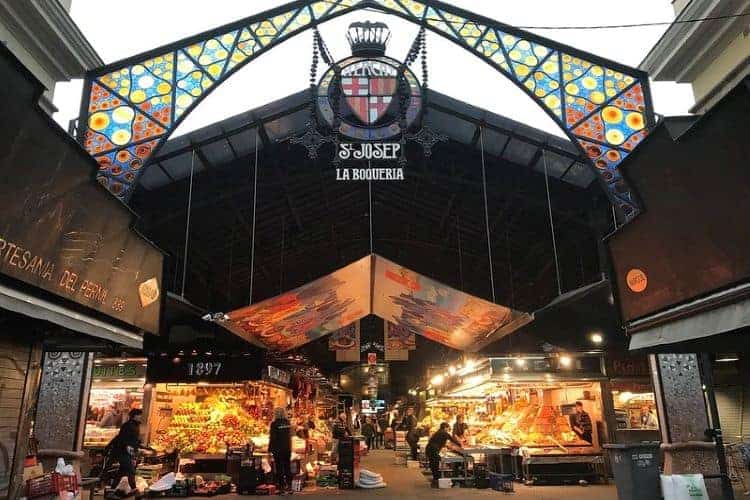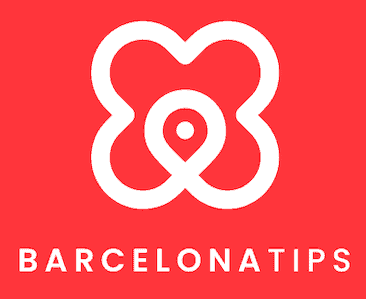Mercat La Boquería is the famous market on the Rambla in the center of Barcelona. An obligatory stop for anyone who loves good food and delicacies. Did you know that there are no less than 39 covered fresh food markets throughout Barcelona? La Boquería on the Rambla is the very largest in Europe and a favorite among culihoppers. The market can count on international fame: for example, a Spanish restaurant named Boquería opened in New York. And the Market Hall in Rotterdam is also inspired by the Boquería.
| La Boquería | Tickets, opening hours & public transportation |
|---|---|
| Price | Free |
| Adress | La Rambla 91 |
| Public transportation / subway | Subway: Liceu (L3) |
| Opening hours | Mon – Sat: 08.00 – 20.30 |
Contents
- Briefly, what is the Boquería and why should you visit this highlight?
- Plan your visit to the Boquería
- Tours and guided tours Boquería market
- Practical information
- How to get to the Boquería market?
- What can you see and do on the Boquería?
- History of La Boquería
- Tips for when you go shopping at La Boquería
- Paradise for ham lovers
- Vietnam in La Boquería
Briefly, what is the Boquería and why should you visit this highlight?
The Boquería is Barcelona’s largest fresh food market, one of the largest in all of Spain and even one of the largest in the entire world. As an attraction, the market is a must-see for foodies and photographers. A visit to the colorful market hall is guaranteed to delight your senses. With 330 stalls and over 2,500 square meters full of Spanish taste treats, your mouth will be watering from this place.
The market, despite the many tourists, can certainly still be called authentic in my opinion. The charm is immediately perceptible. You can also score lots of goodies that can go straight back home in your suitcase. Highly recommended: go around dinner time so you have enough appetite to taste. Both on and around the market you can get delicious (mini) dishes or order a snack and a drink.
Plan your visit to the Boquería
To visit the city’s largest fresh produce market, you don’t need to make many arrangements. Admission is free, you can visit almost any time of day, and the market is right in the center. If it rains, that’s no problem, since the market is covered.
When to visit La Boquería?
It is recommended to visit the Boquería in the morning, when more stalls are open. The earlier, the quieter it usually is. Between 8:00 and 9:00 you will encounter mostly locals doing their shopping.
If you go around lunchtime it is usually crowded, but then you can order something to eat right away.
A visit to the market can be perfectly combined with a walk along la Rambla, a visit to the El Raval district or the Gothic Quarter. How long you need for your visit is entirely up to you! You can see everything in about twenty minutes, but if you want to drink a caña (beer) or eat an extensive meal, you will need longer.
Tours and guided tours Boquería market
Would you like to visit the Boquería with a guide? That’s possible.
Cooking Workshop
Discover your inner chef with a cooking workshop. Enjoy the smells, textures and flavors of the best seasonal products. And learn to choose the delicacies on the market like a professional. With the help of expert chefs, you will visit the Boquería market to select the freshest ingredients with which to prepare a delicious menu.
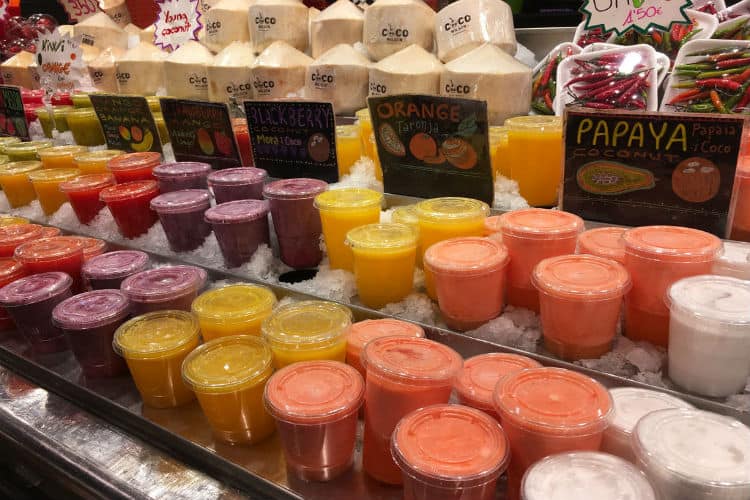
Freshly squeezed, garish juices with exotic combinations like coconut-pineapple or passion fruit-banana. Note that many market vendors do add sugar and/or water to these.
Practical information
Opening hours
La Boquería is open between 8 a.m. and 8:30 p.m. Monday through Saturday. On Sundays and holidays, the Boquería is closed. There is no fresh fish on Mondays!
To reduce the crowds a bit, there is a new rule for groups: on Friday and Saturday, you are not allowed to enter the market in a group of more than 15 people until 3 p.m.
Prices
Entrance to the Mercat La Boquería is free.
How to get to the market la Boquería?
La Boquería is located in the center (Ciutat Vella) of Barcelona on the famous Rambla, about halfway down the promenade in the El Raval neighborhood. It is an easy walk from El Raval and the Gothic Quarter.
Metro: the nearest subway stop is Liceu (subway line L3, green line). Take the La Boquería exit. Alternatively, you can get off at Plaça Catalunya (metro lines L1 and L3, red or green line).
If you take the Hop-on Hop-off bus, exit at Plaça Catalunya.
Bus: city buses 14, 59, N9, N12, stop at the Boquería.
Bike: biking from downtown gets you to the market quickly.
What can you see and do on the Boquería?
On La Boquería, keep your camera at the ready for colorful pictures and – while you’re there – order tapas at one of the many bars. These are guaranteed to serve the freshest snacks in town. El Pinotxo (stall 466) and El Quim (stall 584) are both classics, but around the market hall there are other nice places and in general you can eat well here. By the way, many stalls also offer snacks to satisfy your appetite.
Meat, fish, spices, vegetables, fruits, seeds, nuts, sausages, intestines, legumes, cheese…. you will come across products and ingredients in the market from Catalonia, all over Spain, but also from the rest of the world. Think, for example, of typical Latin American products.
Some stallholders don’t mind letting you taste. Definitely do!
This landmark is popular with photographers, but the market vendors are not always happy with cameras. Asking permission is appreciated.
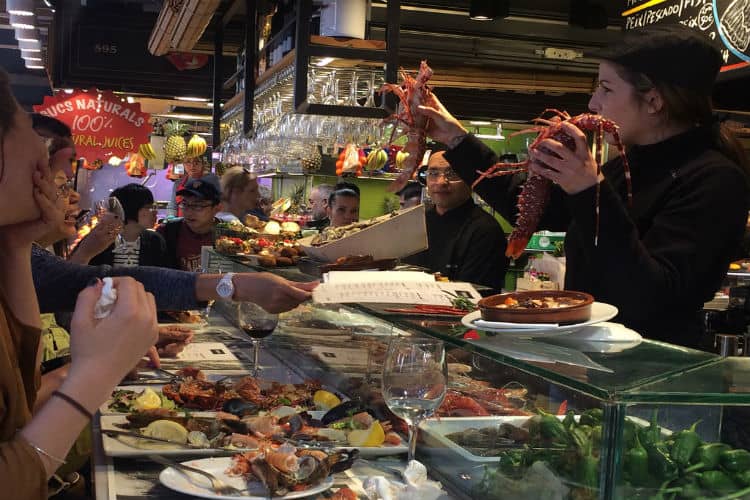
History of La Boquería
The Mercat de Sant Josep de Boquería, as La Boquería is officially called, dates back to the 13th century when a monastery stood here. Butchers sold their meat on tables just outside Barcelona’s city walls in 1217. According to documents that have survived. That is also where the name is said to come from: the Catalan “boc,” meaning goat meat.
But there is another story about the background of the name boquería, and it takes place during the time when the Spanish were fighting the Moorish occupiers. A Catalan count brought back from the reconquered, southern Spanish city of Almería a beautifully decorated door and placed it as a gateway in the Roman city wall, just in front of where the market is today. Passersby who saw the door were so impressed by its beauty that their mouths (“boca” in Spanish) spontaneously fell open.
The huge iron canopy dates only from the nineteenth century, for before that it was an open space surrounded by columns. The current market hall was built in 1836 (designed by Antoni Rovira, Josep Fontserè and Josep Cornet) and the metal structure was inaugurated in 1914. This structure was based on that of Les Halles (The Halls) in Paris. As befits Barcelona, modernist elements, such as stained glass windows, can be seen at La Boquería. Today, the fish market forms the heart of the covered hall.
Tips for when you go shopping at La Boquería
Want to shop around? Then you would do well to compare prices. At the entrance on the side of la Rambla to the fish stalls in the middle, products tend to be a lot more expensive. Fish is freshest in the morning, and for fruits and vegetables, locals say it’s best to come in the afternoon. The stallholders display the best specimens prominently and take the less beautiful ones first. So at the end of the day, the most attractive ones remain.
The market has traditionally been a social gathering place where families and friends gather to shop and eat. The stallholders all had their own place, which is still the case today. In the middle a fresh fish market, in the shape of a circle. There used to be stalls between the pillars surrounding the market; today there are restaurants, bars and stores there.

Fresh lobster at La Boquería
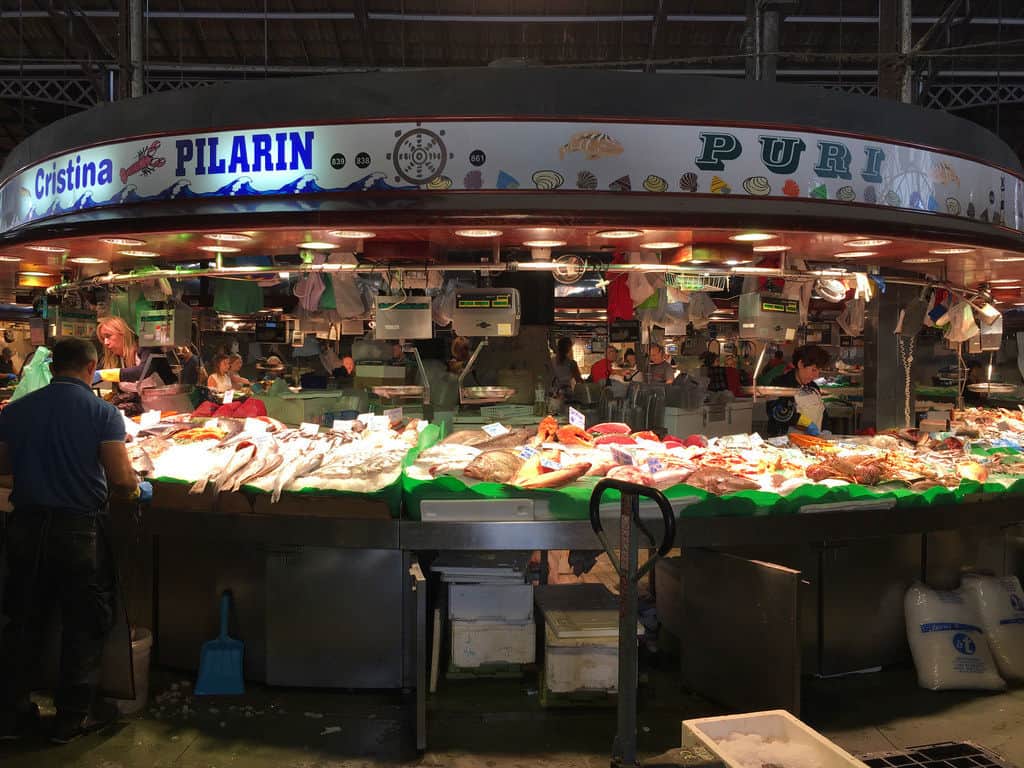
The proud centerpiece of the market: the fish.
Paradise for ham lovers
OAt La Boquería, you can buy ham from numerous stalls; it comes in different qualities and prices. One is bellota, which comes from black pigs from southern Spain (Extremadura, for example). They have eaten acorns (“bellota” in Spanish) all their lives and the meat has been dried for at least five years. And you can taste that in the rich, full flavor! But tastes differ; some prefer to eat their ham a little lighter in flavor, in which case you can perfectly choose a jamón serrano (serrano ham) that has been dried for between two and three years. The market vendors are happy to tell you about it!
At most of the stalls you can have a taste, but try to avoid the point bags of pre-cut pieces of ham, sometimes they are there from early morning and then it is dried out. Of course, a glass of cava is another solution to that, but it’s still better to have the ham sliced in front of you, ham slicer is a real profession by the way!
Vietnam in La Boquería
The part at the bottom of La Boquería, on the sea side, is called “Vietnam” and the new adjacent part at the bottom is called “Eixample (extension) de Vietnam.
This is where the housewives of El Raval do their daily shopping and you can see the multicultural character of this neighborhood in the products you can buy there. Lots of mint, for example, and exotic spices and vegetables from all over the world. Fish is cheaper in this part than in the central middle section.
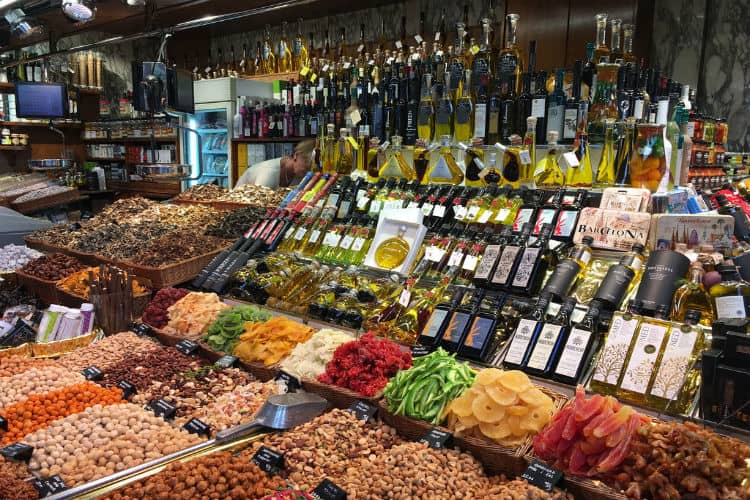
Herbs and spices, oils, dried fruits and peppers.
Personal tips
- Find the entrance on the Rambla side too crowded? You can enter the market at the back. If you enter C/Hospital from the Rambla, it’s the first possibility to the left.
- Take your sandwich or juice to the little square near the Antic Hospital de Santa Creu, a stone’s throw from the Boquería. There you’ll sit in peace and quiet, yet in the middle of the city!
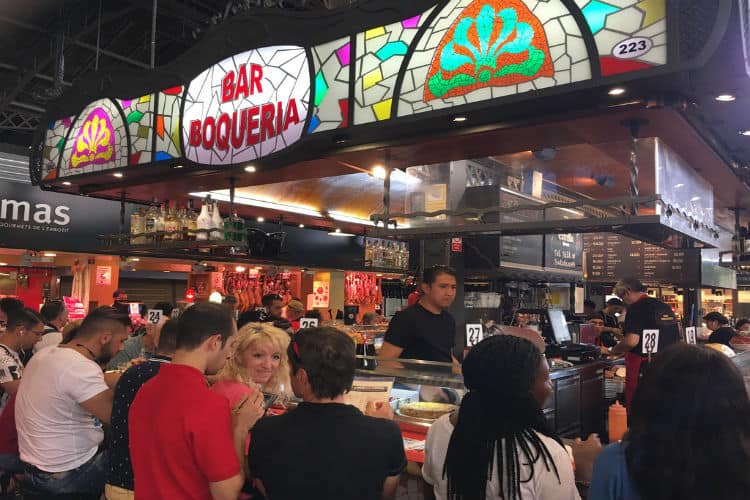
There are numerous food stalls in the market from early breakfast to early evening!
